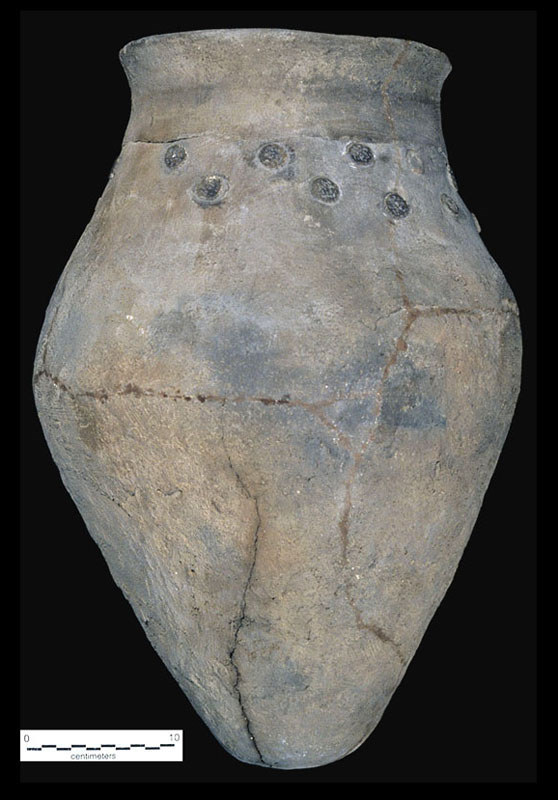“McCutcheon pot” found in a rockshelter 10 miles north of Fort Davis in the early 1930s. It is 50 cm (almost 20 inches) tall. According to Alan Ferg, “This jar combines traits of several of Kelley’s protohistoric pottery types, including an unobliterated rim coil like Chinati Filleted Rim, heavily wiped or brushed surfaces like Chinati Scored, and a stuccoed lower body like Capote Plain. It has two offset rows of appliquéd bumps encircling the neck.” Ferg points out that the “wide mouth, high shoulder, and pointed bottom (although the very bottom is flat), [give] it a very Athapaskan appearance.”
An INAA sourcing study led by Nancy Kenmotsu found that the McCutcheon pot belongs to an unassigned (as-yet unknown) source group that is distinct from the Presidio group to which most locally made La Junta wares have been assigned. Among the La Junta wares that have been sourced from Millington and Loma Alta, however, there are several sherds that fall into the same unassigned group. This points to the need for additional sampling of site collections and of clay samples in the La Junta region. Photo from TARL Archives. |
